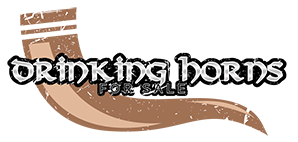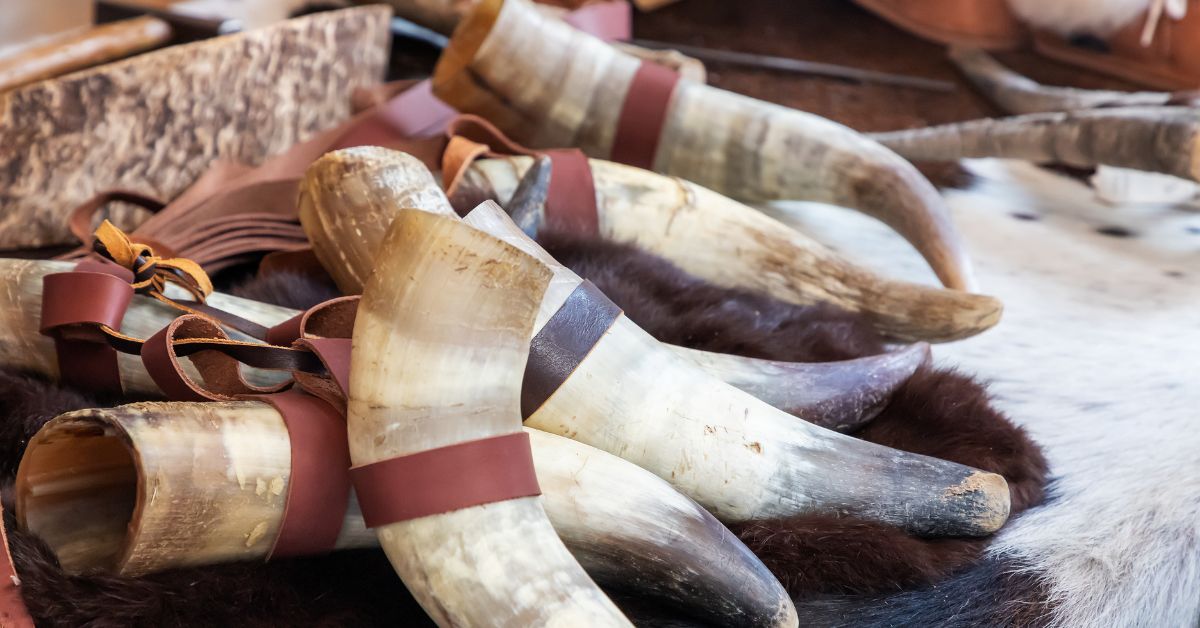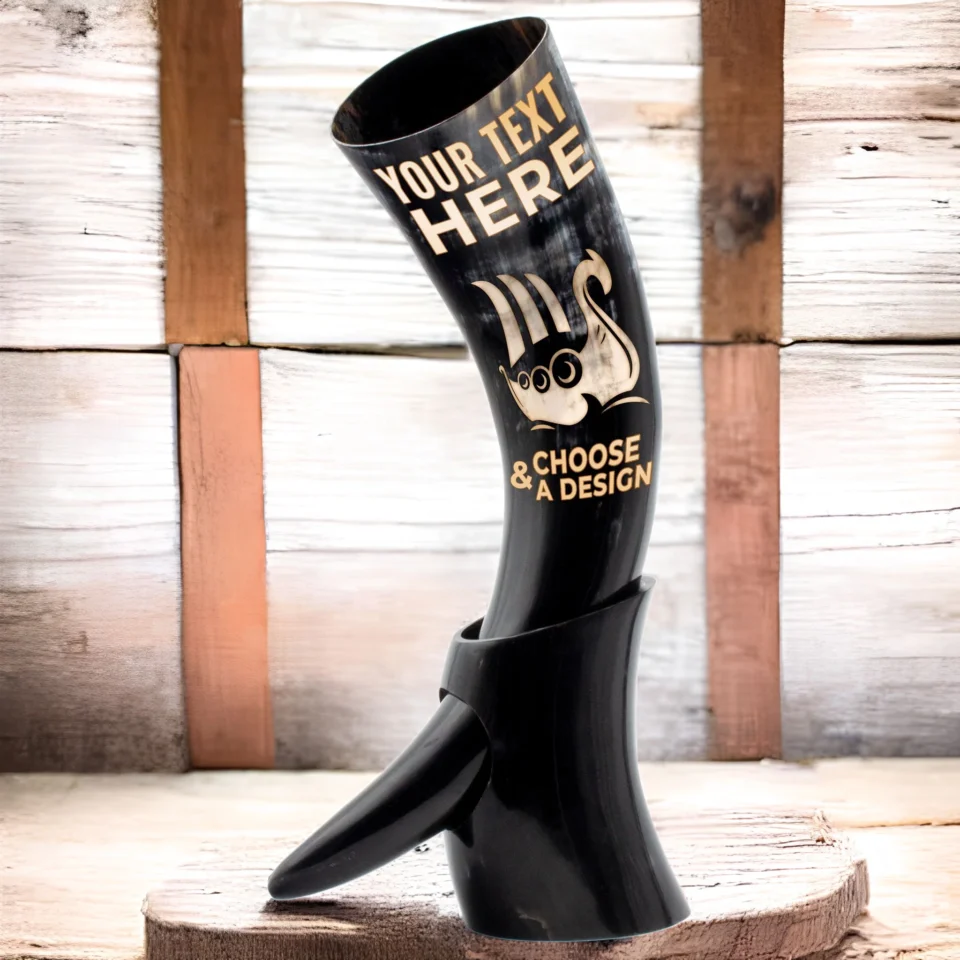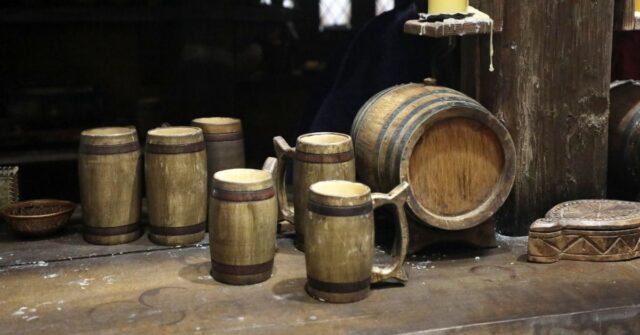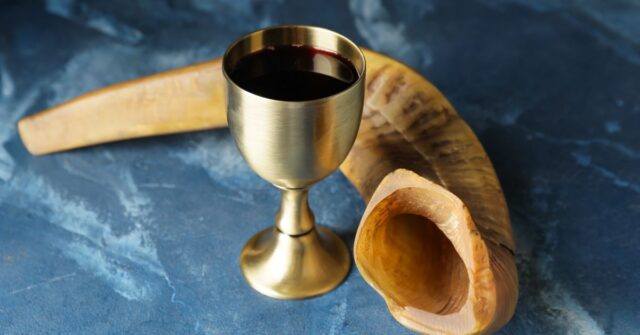Drinking horns, steeped in history and culture, have been more than mere vessels for beverages.
Throughout centuries, these iconic items have woven themselves into the fabric of religious and ceremonial life, particularly during medieval times.
Introduction to Drinking Horns
Originating as early as the Neolithic period, drinking horns have traversed vast timelines and geographies, evolving in their make and significance.
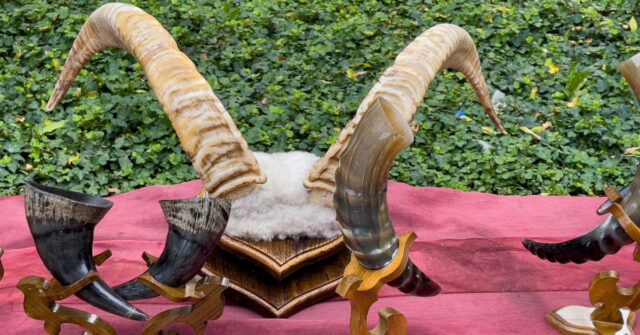
Historical Origins and Evolution
Initially fashioned from bovine horns and later from other materials, these drinking vessels have marked significant events and rites across various cultures.
Their evolution from simple containers to ornate symbols of power reflects their integral role in societal ceremonies.
Materials and Craftsmanship
The crafting of drinking horns has varied, involving intricate carvings and inlays, often indicating the horn’s ceremonial value and the status of its owner.
Artisans chose materials based on availability and cultural significance, enhancing their natural beauty and resilience.
Geographical Distribution and Variations
From the Norse lands to the depths of Africa, drinking horns have appeared in countless forms, each adapted to local traditions and available resources, showing a rich diversity of design and decoration.
Significance in Various Religions
In religious contexts, drinking horns have held profound symbolic meanings, associated with gods, creation myths, and sacred rites.
Pagan and Norse Mythology
In Norse mythology, drinking horns were not just containers but esteemed relics believed to hold mystical properties, often linked to deities like Odin and Freyja.
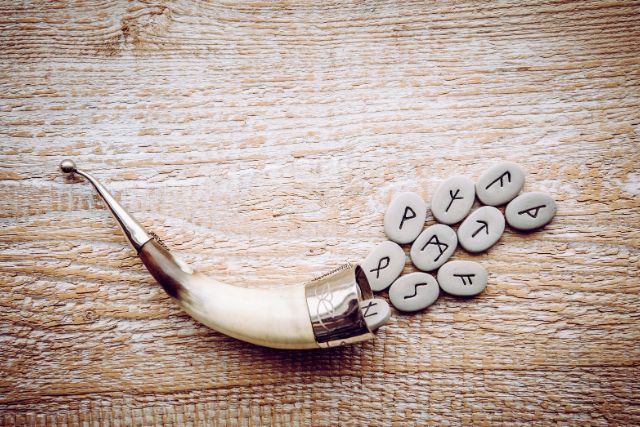
Christian Symbolism and Usage
Contrasting their pagan counterparts, in Christian iconography, these horns sometimes symbolized abundance and gratitude, used in religious feasts to signify communal unity under the divine.
Other Religious Traditions Featuring Drinking Horns
Beyond Norse and Christian contexts, other cultures integrated drinking horns into their spiritual life, often in rituals of bonding and oath-taking.
Drinking Horns in Ritual Practices
The incorporation of drinking horns in rituals underscores their dual role as both functional objects and carriers of deeper meaning.
Ceremonial Uses and Ritual Contexts
From coronations to funeral rites, drinking horns have featured prominently, their usage carefully prescribed by tradition to reinforce community bonds and societal values.
Symbolic Meanings Attached to Drinking Horns
Often, these horns symbolize strength, virility, and prosperity. As such, their presence in rituals is meant to invoke these qualities among participants.
Modern Revivals of Traditional Practices
In contemporary times, there has been a resurgence in the use of drinking horns, especially within communities seeking to reconnect with their ancestral heritage.
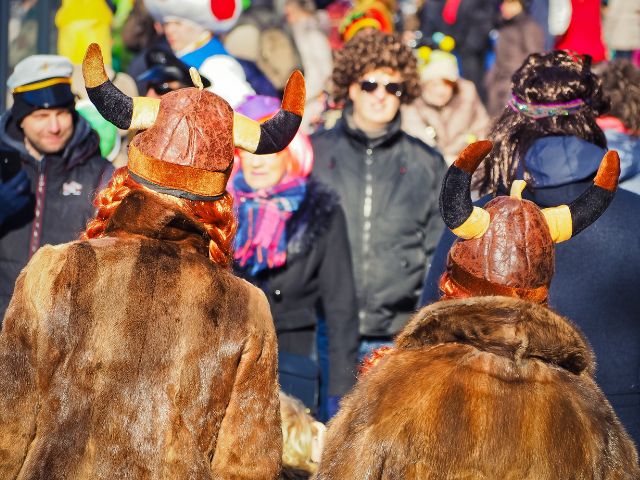
Archaeological and Textual Evidence
The historical significance of drinking horns is well-documented, supported by both archaeological finds and texts.
Findings from Archaeological Excavations
Excavations across Europe and beyond have unearthed drinking horns that date back thousands of years, offering insights into their use and the cultures that valued them.
References in Ancient Texts and Scriptures
Ancient texts, from sagas to religious scriptures, often reference drinking horns, indicating their importance in rituals and daily life.
Insights from Ethnographic Studies
Ethnographic research has provided a further understanding of how drinking horns functioned within various societies, revealing their roles in social and religious contexts.
Cultural Impact and Legacy
The legacy of drinking horns extends beyond their original use, influencing modern culture and historical scholarship.
Influence on Art and Literature
Drinking horns have inspired artworks and literary works, embodying themes of heroism, feasting, and fellowship.
Drinking Horns in Contemporary Culture
Today, drinking horns are often seen at historical reenactments and cultural festivals, serving as a bridge to the past and a means of engaging with history.

The Enduring Symbolism of Drinking Horns Today
Even in the modern era, drinking horns carry a resonance of ancient traditions, reminding us of the enduring human desire to connect with spiritual roots through physical artifacts.
Conclusion
In conclusion, drinking horns illustrate the profound interplay between everyday objects and spiritual life, highlighting their enduring significance across ages and cultures.
Summary of Key Points
This exploration has uncovered the multifaceted roles of drinking horns in religious rituals, from ancient times to modern-day revivals.
Continuing Relevance in Modern Religious Observances
The continued use and reverence of drinking horns in religious and cultural contexts today demonstrate their timeless appeal and symbolic power.
Future Research Directions
Further research could explore the less-documented uses of drinking horns in other world cultures, potentially uncovering new aspects of their historical and cultural significance.
